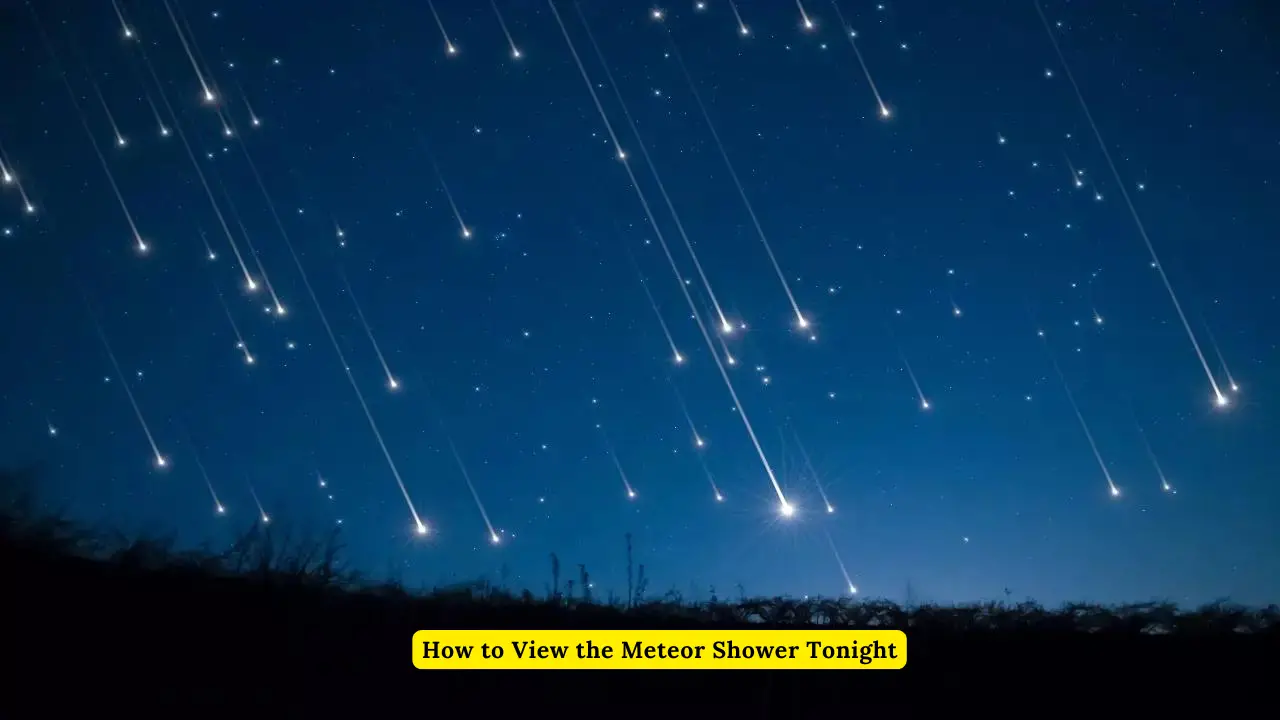Meteor showers are a spectacular astronomical event that can be enjoyed by anyone with a clear view of the night sky. Whether you’re an amateur stargazer or a seasoned astronomer, watching a meteor shower can be a thrilling experience. In this guide, we’ll explore how you can use the Interactive Meteor Shower Sky Map to enhance your viewing experience and locate the meteor shower radiant with ease. How to View the Meteor Shower Tonight
Meteor Showers
1. What Are Meteor Showers?
Meteor showers occur when Earth passes through the debris trail left by a comet. As these tiny particles enter Earth’s atmosphere, they burn up, creating bright streaks of light known as meteors or “shooting stars.”
2. Key Meteor Showers Throughout the Year
Several major meteor showers occur annually, each with its own unique characteristics and peak viewing times. Some of the most well-known meteor showers include:
- Perseids (August)
- Geminids (December)
- Leonids (November)
- Quadrantids (January)
Using the Interactive Meteor Shower Sky Map
The Interactive Meteor Shower Sky Map is a valuable tool for locating and viewing meteor showers. This tool allows you to track the position of the meteor shower radiant, which is the point in the sky where meteors appear to originate.
1. Accessing the Sky Map
To access the Interactive Meteor Shower Sky Map, visit Time and Date’s Interactive Sky Map. This map provides real-time data on the location of meteor showers and their radiants.
2. Navigating the Sky Map
The Sky Map is user-friendly and easy to navigate. Here’s how to use it:
- Locate the Radiant: The map highlights the position of the meteor shower radiant. Use the search bar to enter your location, and the map will adjust to show the sky above you.
- Explore the Sky: Click and drag to move around the map. You can zoom in and out to get a closer look at different constellations and celestial bodies.
- Track Meteor Activity: The map provides information on the expected meteor activity, including the peak times for viewing.
Tips for Viewing Meteor Showers
1. Find a Dark Location
To maximize your viewing experience, find a location away from city lights and light pollution. The darker the sky, the more meteors you’ll be able to see.
2. Check the Weather
Clear skies are essential for viewing meteor showers. Be sure to check the weather forecast in advance and choose a night with minimal cloud cover.
3. Allow Your Eyes to Adjust
Give your eyes time to adjust to the darkness. Avoid looking at bright lights or screens, as this can affect your night vision.
4. Be Patient
Meteor showers can vary in intensity, with some nights producing more meteors than others. Bring a blanket or reclining chair and prepare to spend some time watching the sky.
The Science Behind Meteor Showers
1. The Role of Comets
Meteor showers are closely linked to comets, which are icy bodies that orbit the Sun. As a comet approaches the Sun, it heats up and releases particles that form a trail of debris. When Earth passes through this trail, we experience a meteor shower.
2. The Radiant Point
The radiant point is the area in the sky from which meteors appear to originate. It is named after the constellation in which it is located. For example, the Perseid meteor shower has its radiant in the constellation Perseus.
Conclusion
Viewing a meteor shower is a magical experience that connects us to the wonders of the universe. With the help of the Interactive Meteor Shower Sky Map, you can easily locate the radiant and enjoy a night of stargazing. Remember to find a dark location, be patient, and enjoy the celestial show.
